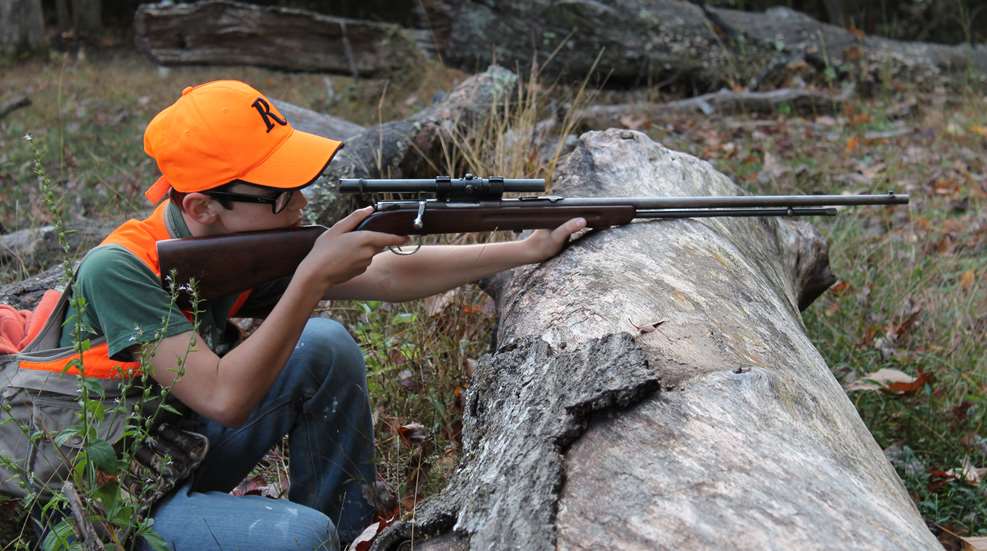
It’s a warm October afternoon on a hickory ridge, and I am trying my best to be a ghost. Slowly, slowly, I ease my foot down onto the dry leaves on the forest floor. Moving quietly in these conditions seems impossible, but I creep down the ridge, eyes skyward. Sixty yards ahead in the top of a Shagbark hickory tree, two gray squirrels are raining the ground with cuttings from the hickory nuts they are devouring.
I clutch the old .22-caliber Remington rifle close, and try to find a quiet footfall for each step. Slow, slowly, I fight the urge to be faster—patience is the key here. It is hard to see through the foliage, but if one of the squirrels changes position I stop and remain motionless for a few minutes until I think it is safe to move. When I get within about 35 yards I ease up beside a red oak and settle in, trying to get a good rest for the rifle. I know it may be several minutes before one of the squirrels will get clear enough for a shot. Patience, I tell myself. When I finally see the opportunity, the crosshair settles at the base of the squirrel’s ear; I exhale and start the slow, steady squeeze on the trigger.
Most of us would agree these days that we have a shortage of hunters. Falling hunter numbers have been a major concern for the past several years and many organizations (including the NRA) have endeavored to improve this situation with programs like the three R’s: Recruiting new hunters, Retaining the hunters we have, and Reactivating hunters who have stopped hunting. All of these are worthy goals and I applaud them, but how do we actually entice new hunters to try our sport, and how do we train and educate them in the many facets of hunting? One way is squirrel hunting.
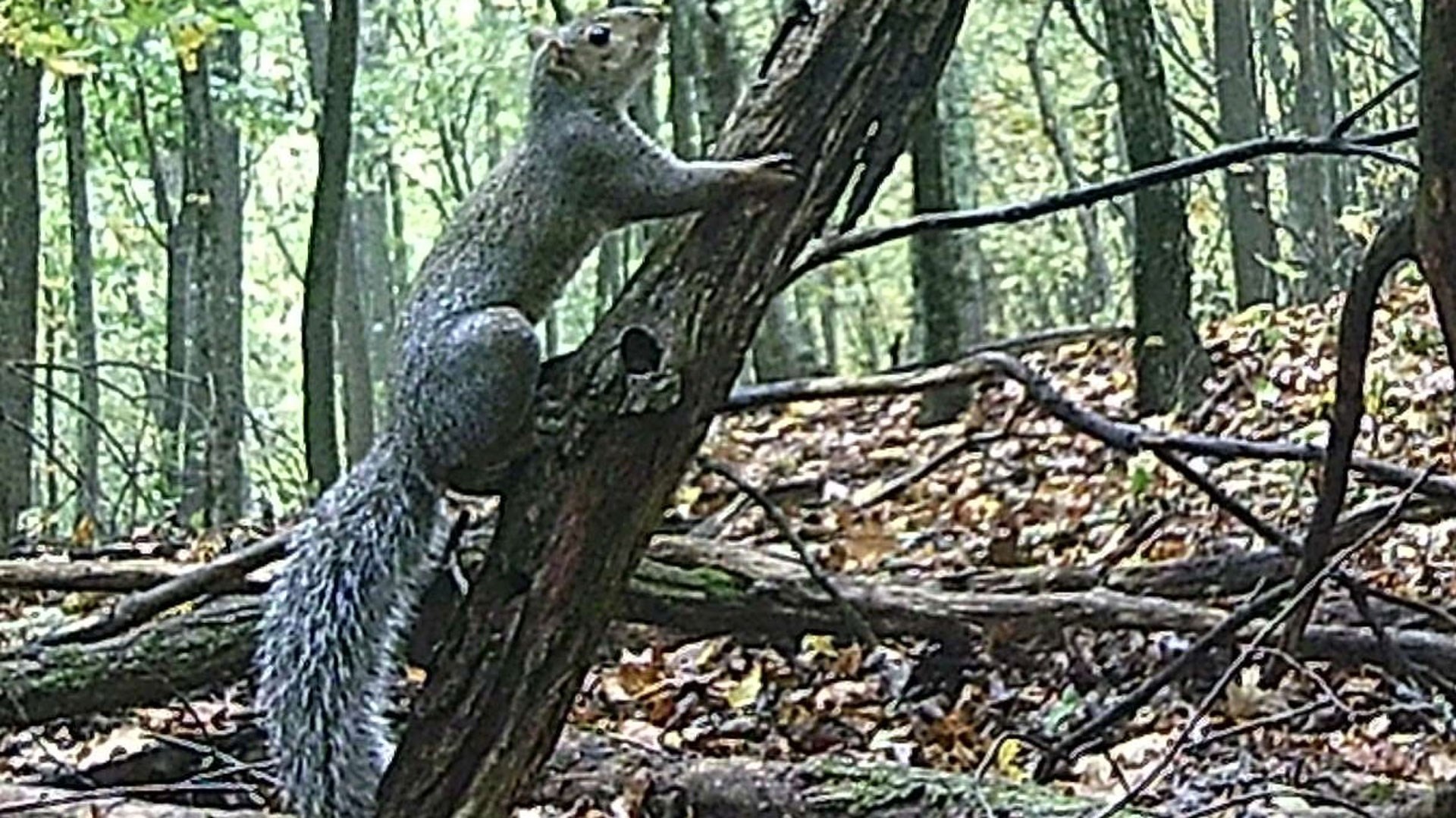
The Woodland Classroom
For many of us east of the Big Muddy, the squirrel woods are where we learned to hunt. The skills needed to hunt anything from Whitetails to Greater Kudu can be learned pursuing bushytails. So, let’s think about it; what are the basic, fundamental things the young hunter (or anyone new to hunting) needs to learn?
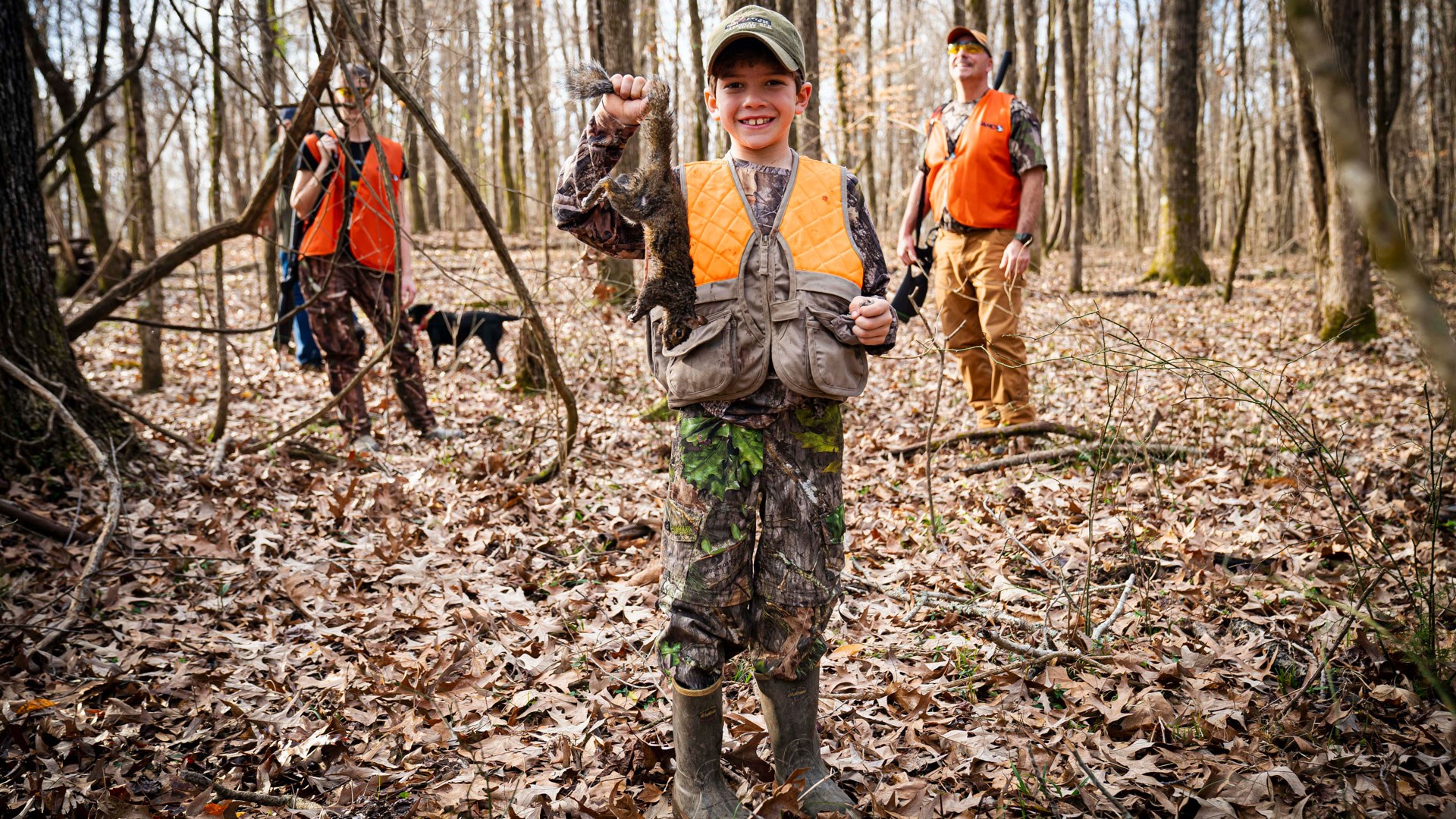
How to Move Through the Woods
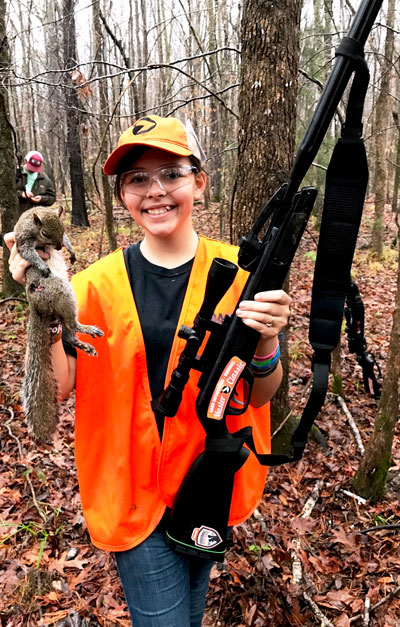
Moving quietly in the forest has been a necessary skill for hunters since the time we all carried sharp sticks. Those who have never squirrel hunted may think this is not necessary to bag a limit, but they are wrong. Don’t confuse the squirrels in the city park with those you will be hunting. Blundering through the woods in the dry leaves will not get you the makings for squirrel gravy and biscuits. Squirrels will teach you when to move, how far to move, and what is safe to step on. These are the basic components for any spot and stalk endeavor.
How to Sit Still
Like moving quietly, simply remaining motionless is fundamental to all hunters. For little kids (and some adults) this seems almost impossible, but it can be learned in short sessions. The new hunter will soon discover most animals will take no notice of them if they don’t move. Having a close encounter with different critters teaches the new hunter a lot, and best of all it is a whole lot of fun. All of this is supposed to be fun, remember?
Find the Food, Find the Game.
Another lesson that all hunters must learn is hunting the food sources. Most wild animals spend a large part of the day simply foraging for something to eat. No matter how good a stretch of woods looks, if there is no food there, the game won’t be either. Squirrels are highly dependent on mast conditions (the seeds and nuts of various trees). Oak and hickory trees (hard mast) will be your primary targets, but squirrels also relish some soft mast like dogwood berries and apples. Sessions in the woods before hunting season are a great way to learn and will be very beneficial. A tree-identification field guide is a good resource for the new hunter who will soon learn which food sources to focus on.
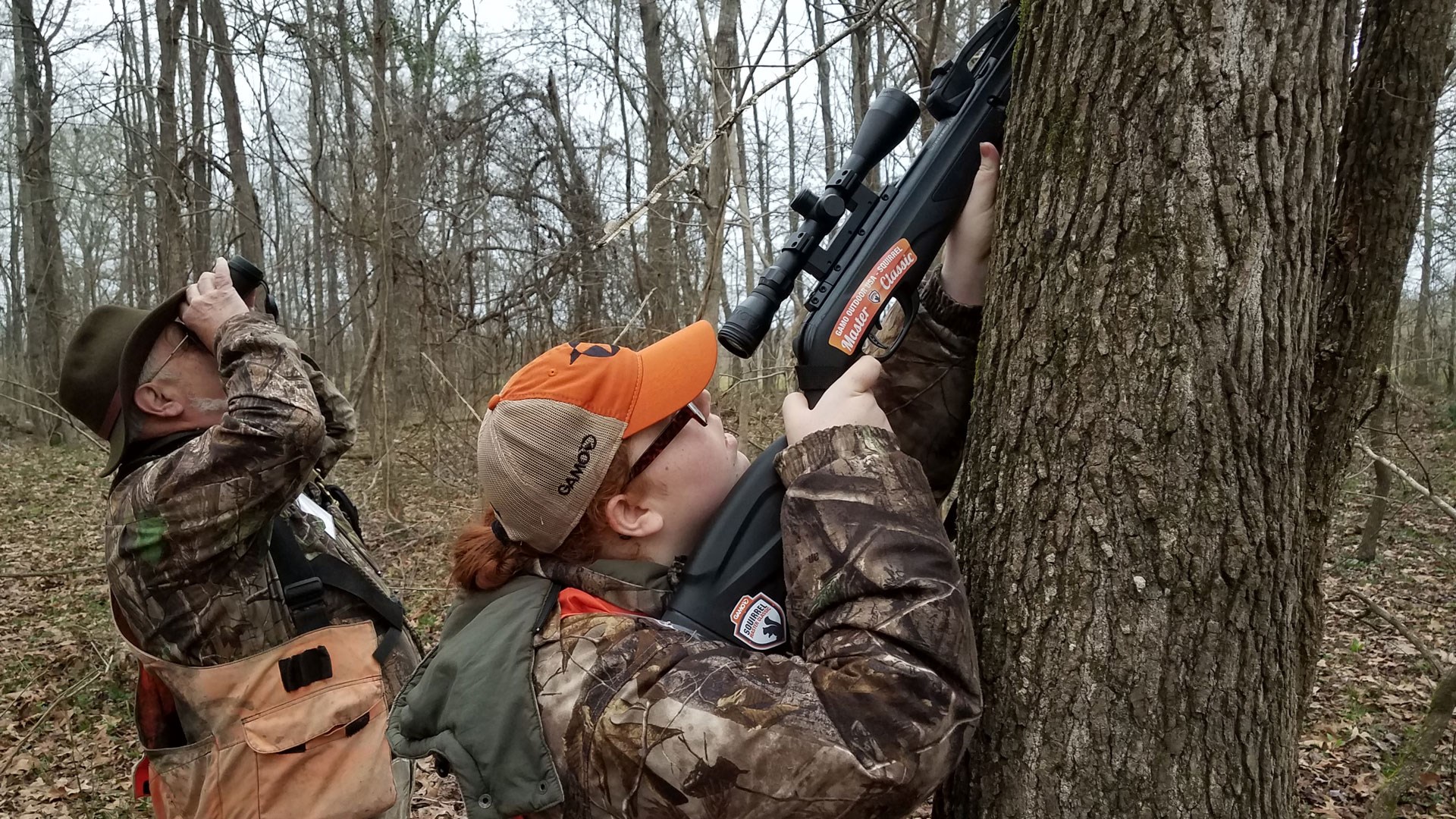
Shoot don’t Shoot
Squirrels will quickly teach the hunter when to take the shot and when they shouldn’t. There are times when squirrels will sit still for long periods, and other times they are in almost constant motion. During the move-stop-move routine, the fledgling hunter learns to wait until just the right shot presents itself. Shot placement for a clean, ethical kill, and knowing when the shot is safe to take are all part of the equation here.
Safety Lessons
The new hunter—under the supervision of a mentor—will learn the many aspects of hunter safety. First come the cornerstones. Always keeping the muzzle pointed in a safe direction, finger off the trigger until ready to fire, and positively identifying the target before touching the trigger, are just part of the lesson here. After this, many other facets of hunter safety can be addressed, such as safely crossing fences, wearing blaze orange, unloading when crossing an area of unsure footing, safely storing the firearm in a vehicle, and many others.
Game Care Basics
Those who don’t come from a squirrel-hunting background sometimes think it odd if you talk about eating squirrels. Just trust me on this, properly prepared squirrel is some of the tastiest wild game you will ever eat. Learning to properly field dress and prepare squirrels and other small game is simple, but it does take a little practice. A few good days in the squirrel woods will give you that practice. Taking pride in producing clean, well-handled wild game will yield years of delicious entrees for the family table. When the new hunter graduates from small game to the first deer, they will be much better prepared handle it.
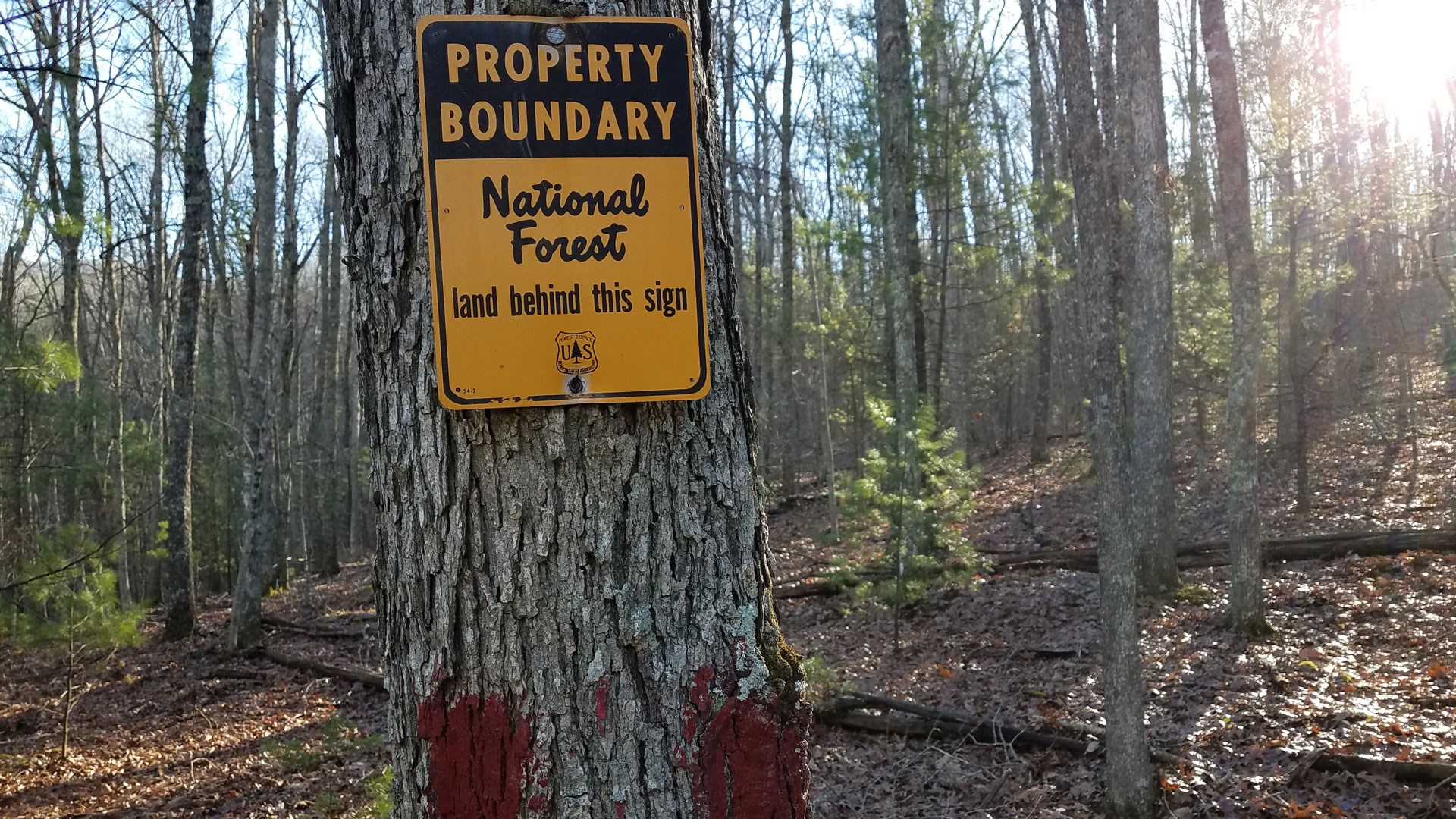
Low Entry Cost
Squirrels just may be the perfect game for starting and training hunters young and old. Almost any forested area may have huntable numbers of these tasty little critters. There are millions of acers of public hunting land in this great country of ours, and on the private-land side, landowners will often allow you to squirrel hunt even when they would balk at deer or turkeys. No fancy gear is really necessary—a pair of boots, some old jeans and a sweatshirt with a blaze orange vest and you are ready to go. Almost any shotgun or .22-caliber rifle will do good service as your squirrel gun.
Whether you are a brand-new hunter or mentoring one, the squirrel woods are out there waiting for you. What are you waiting for?




































